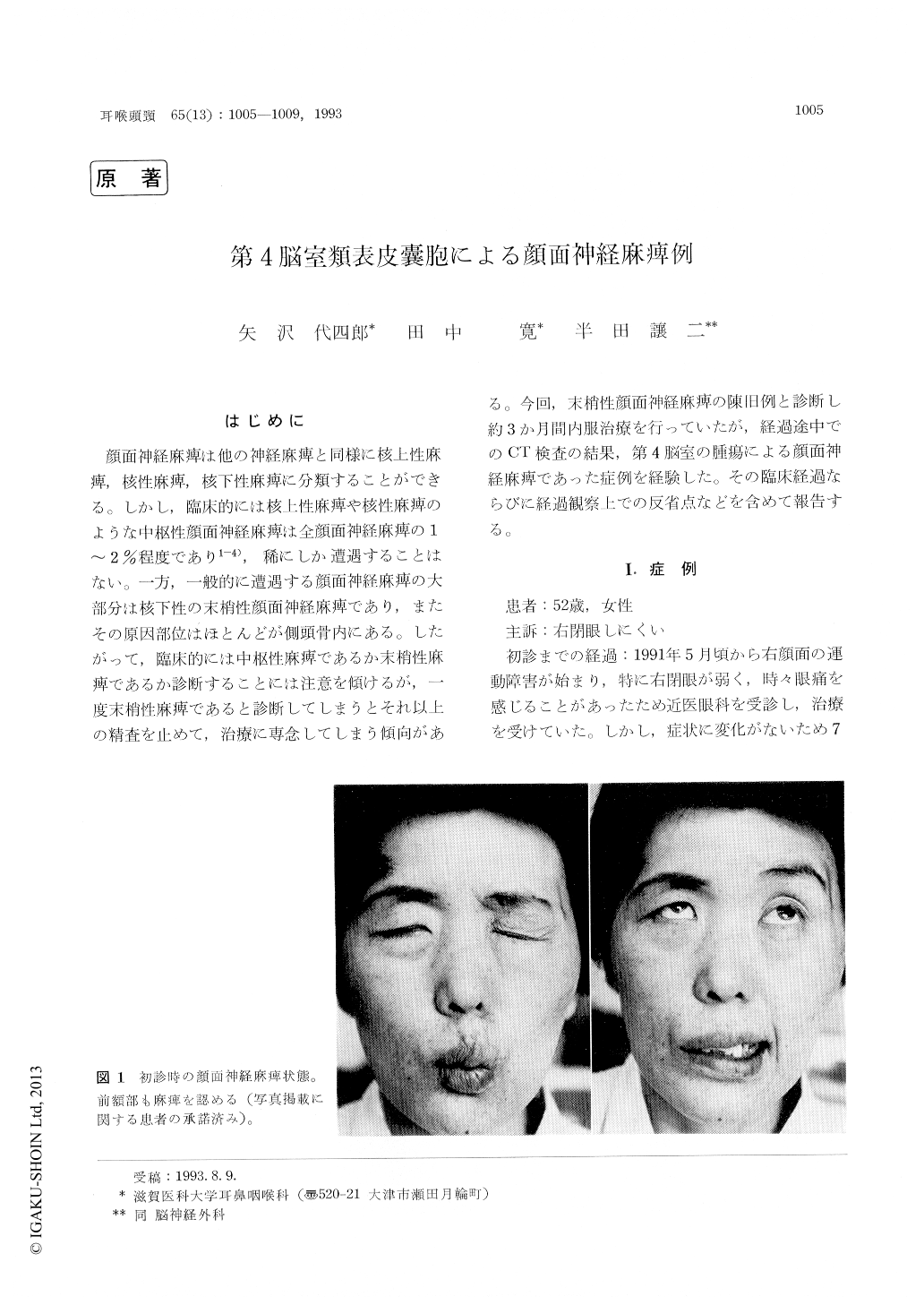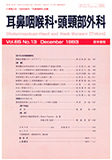Japanese
English
- 有料閲覧
- Abstract 文献概要
- 1ページ目 Look Inside
はじめに
顔面神経麻痺は他の神経麻痺と同様に核上性麻痺,核性麻痺,核下性麻痺に分類することができる。しかし,臨床的には核上性麻痺や核性麻痺のような中枢性顔面神経麻痺は全顔面神経麻痺の1〜2%程度であり1-4),稀にしか遭遇することはない。一方,一般的に遭遇する顔面神経麻痺の大部分は核下性の末梢性顔面神経麻痺であり,またその原因部位はほとんどが側頭骨内にある。したがって,臨床的には中枢性麻痺であるか末梢性麻痺であるか診断することには注意を傾けるが,一度末梢性麻痺であると診断してしまうとそれ以上の精査を止めて,治療に専念してしまう傾向がある。今回,末梢性顔面神経麻痺の陳旧例と診断し約3か月間内服治療を行っていたが,経過途中でのCT検査の結果,第4脳室の腫瘍による顔面神経麻痺であった症例を経験した。その臨床経過ならびに経過観察上での反省点などを含めて報告する。
A 25-year-old female presented with moderate right facial paralysis of 7 months' duration. Her facial paralysis seemed to be the nuclear type with normal stapedial reflex and normal gustatory function. Meanwhile, she complained of dizziness during walking. CT scanning revealed a large tumor in the fourth ventricle. Surgical resection of the tumor revealed an epidermoid cyst which probably compressed the facial colliculus in the floor of the fourth ventricle, resulting in mode-rate facial paralysis. Neurological findings after surgery included complete paralysis of the right abducens and right facial nerve together with impairment of both the paramedian pontine re-ticular formation (PPRF) and the medial longi-tudinal fasciclus (MLF).

Copyright © 1993, Igaku-Shoin Ltd. All rights reserved.


